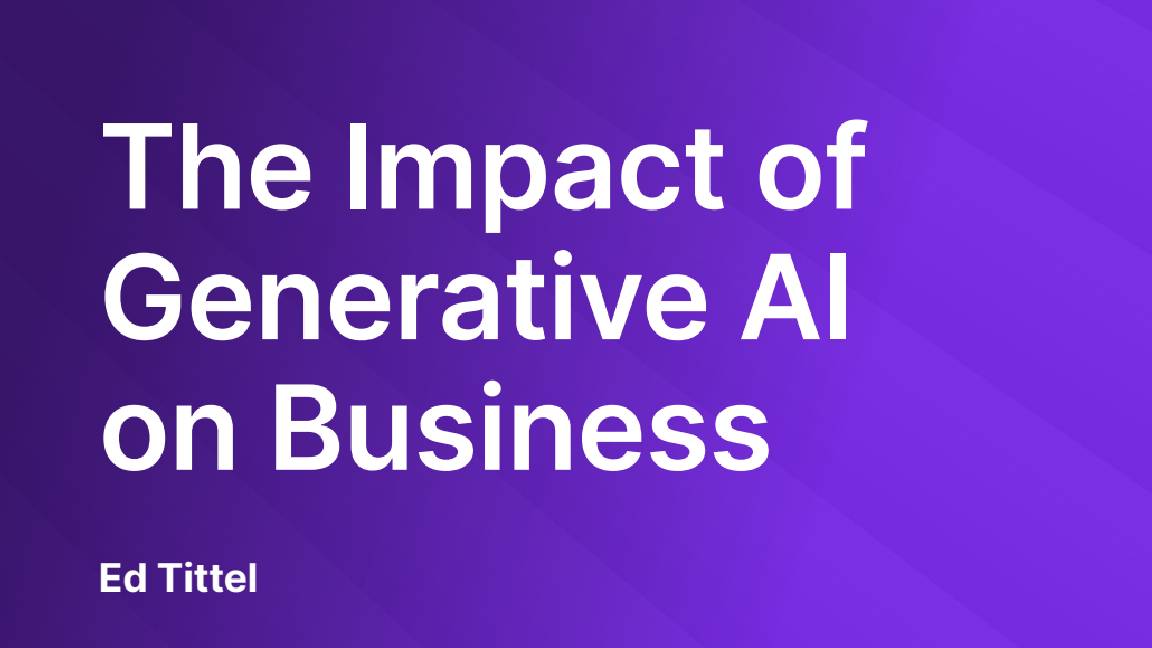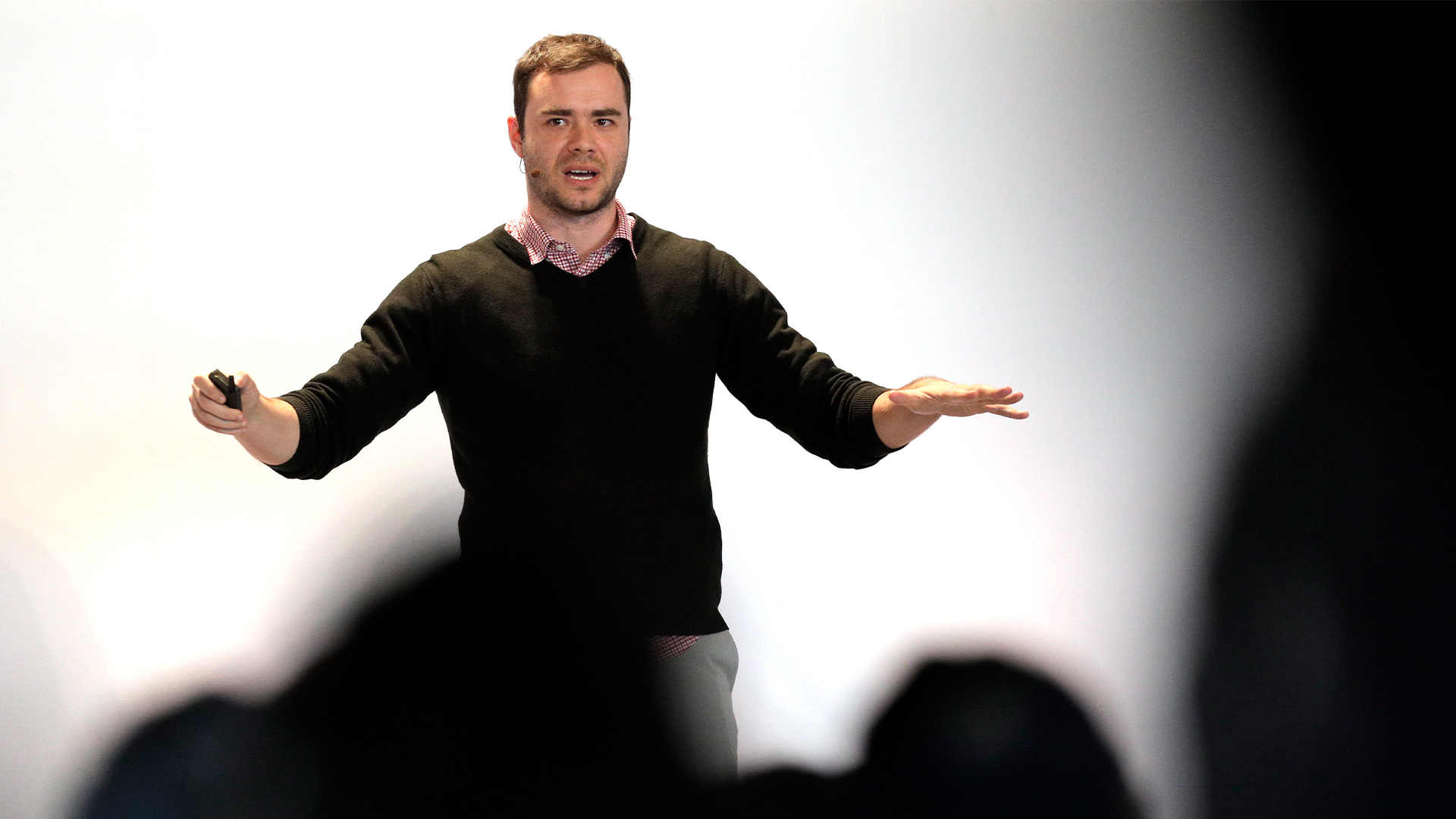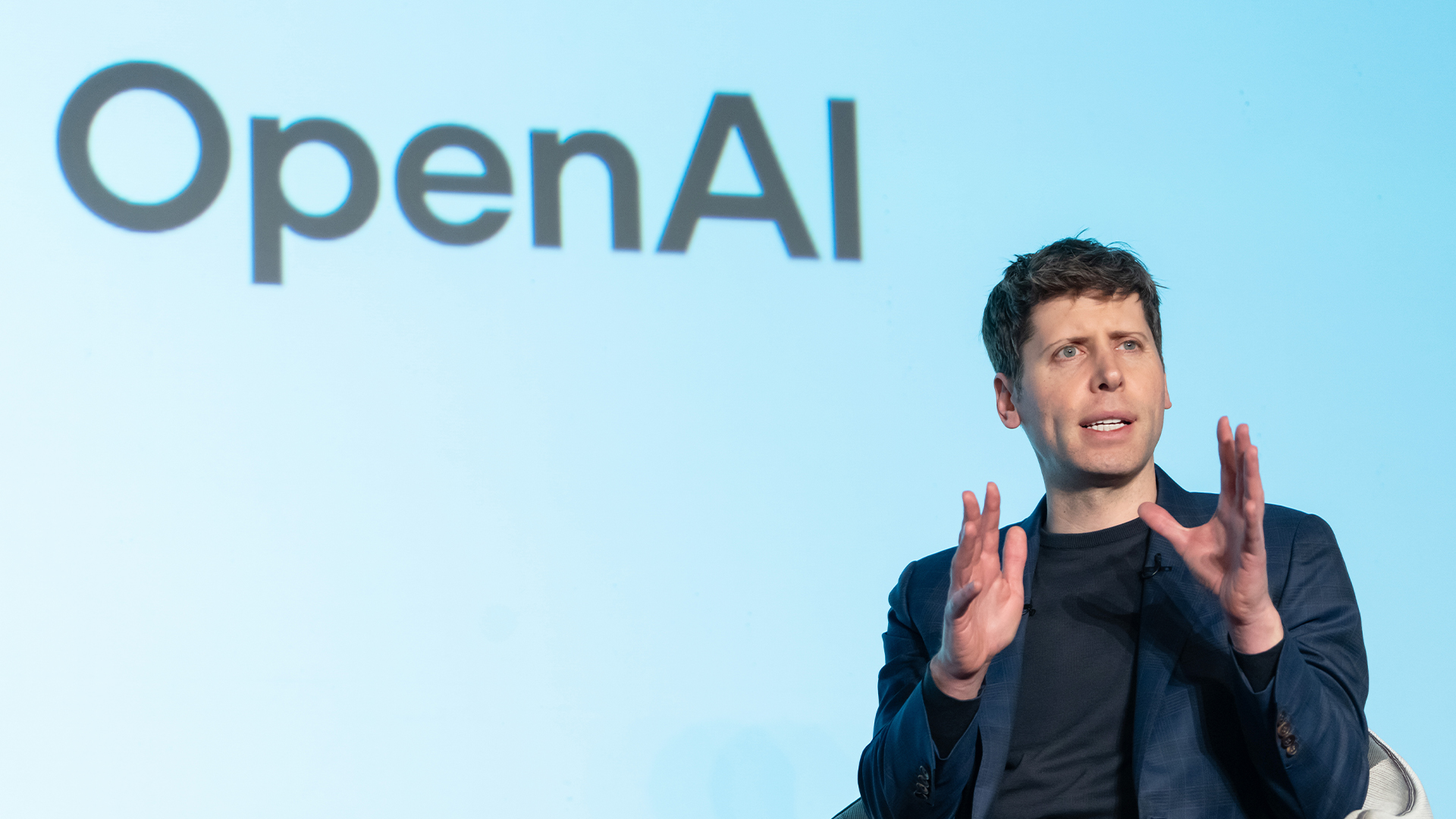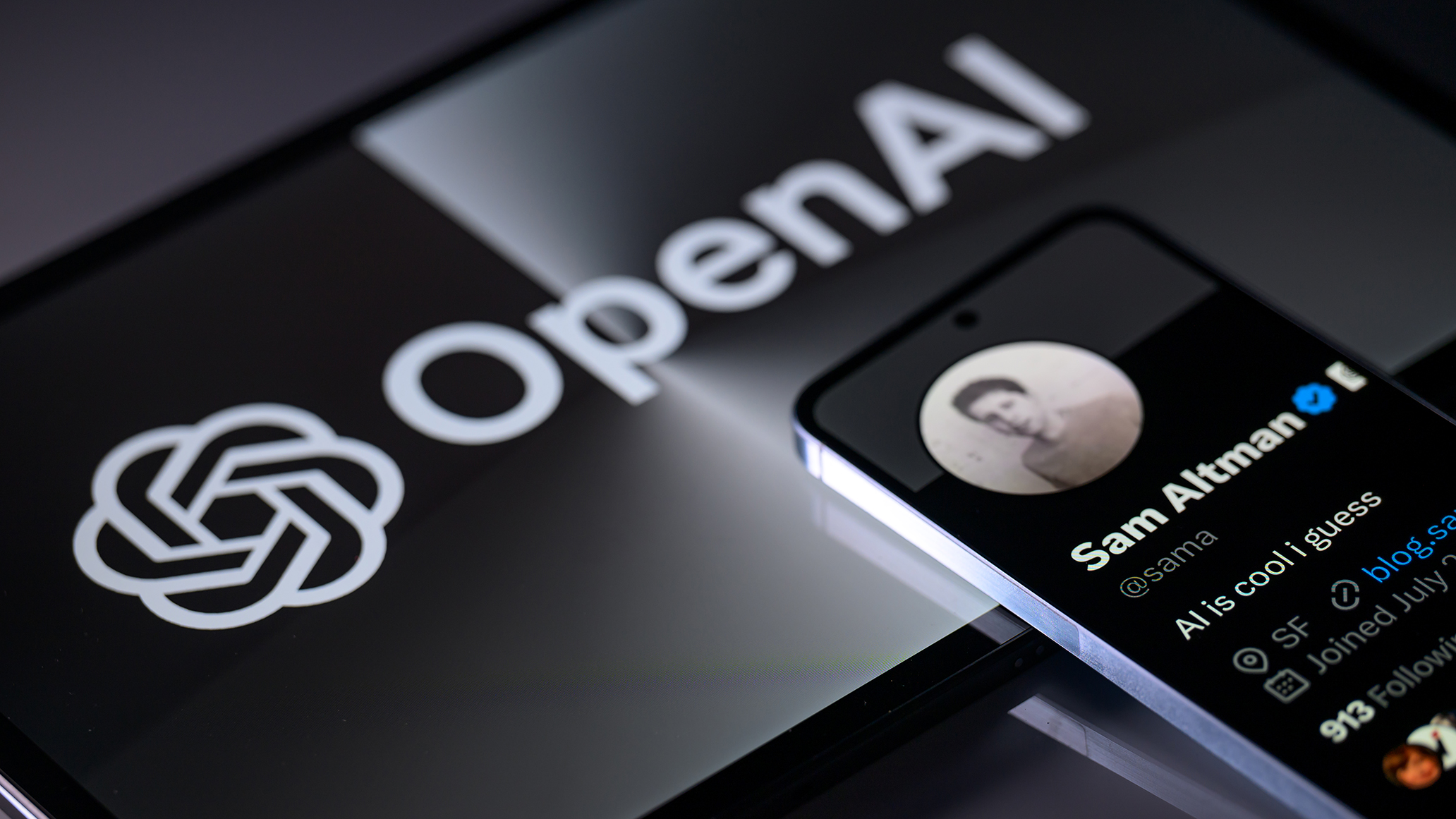There's no single route to AI adoption, and Anthropic is charting all available paths
Advances in model capabilities allow firms to get more done with less data preparation, but data regulation must still be met


Businesses should adopt a hands-on approach to AI for successful deployment and take steps to avoid being locked into specific models, according to an Anthropic expert.
Since generative AI became a major industry focus, several companies have risen to the forefront of the AI field – the two standout names being OpenAI and Anthropic. Both firms have fought to achieve major investment from hyperscalers and provide their customers with a vision for how AI can unlock business value.
Frances Pye, head of European Partnerships at Anthropic, sat down with ITPro to discuss how the market has matured since 2022 and the best routes to AI adoption.
“We're getting far fewer questions about the very basics of what an LLM is, or what AI is, we're doing much less of that kind of education and more very specifically what the specific sort of areas that Claude excels at and like use cases and tasks that Claude is particularly good at.
“I think what we’re also seeing is a move from people thinking in isolation, in its sort of little sandbox, what can Claude potentially and what skills does it have into more holistically thinking, ‘How do we actually productionize some of these use cases?”
Anthropic launched its Claude Enterprise plan in September to meet this growing business need, and has targeted business productivity with its Projects feature for Claude Pro and Teams.
But while Anthropic has the technological expertise and is a leader in where AI is headed, Pye acknowledged it doesn’t have decades of experience in business change management or specific customer domains.
Sign up today and you will receive a free copy of our Future Focus 2025 report - the leading guidance on AI, cybersecurity and other IT challenges as per 700+ senior executives
This is why its partnerships with firms such as AWS are crucial, Pye told ITPro, particularly when they’ve worked with potential customers for years and already helped them through digital transformation journeys.
Pye said that among Anthropic’s customers, there have been two main paths to successful AI deployment: “top-down and bottom-up”. Elaborating on the latter, Pye explained:
“In some businesses, they've created these playgrounds and model gardens, where any employee can go in and just test and tinker and play around with things, experiment.
“So if you have people in the business building their own things in these model gardens, that all tinkers up and it's actually a really effective way to surface the key use cases that customers within the business really want to build.
Anthropic is leaning on its partners to enable this approach, such as the account teams at AWS who understand the individual tech stacks of the businesses looking to leverage Anthropic’s solutions.
But Pye cautioned that this approach is only successful with endorsement from the very top, with leaders closely watching AI use cases as they arise and providing staff with the right level of support and expertise to build out products.
The alternative is the ‘top-down’ approach, which involves a more holistic push to AI. Pye explained that this sees whoever sets out the AI budget, be it the CIO or CTO, convening the entire business to make long-term decisions on how AI can align with their key cost drivers.
“Whether or not the first or second works is often a function of the technical maturity of the organization.
“Those that are in less technically advanced industries, perhaps that second option won't work as well for them because the leadership isn't often thinking about technology in the same way as, perhaps, more technologically advanced industries.”
Data continues to be a stumbling block for partners
Data readiness continues to be a pain point for customers, Pye said, acknowledging that this has been an issue that predates generative AI adoption. But while Pye noted that good data infrastructure is still a key requirement for businesses, generative AI models like Claude can go further without preparation than previous tools.
“One thing that is interesting about generative AI, compared to ‘classical’ or ‘traditional’ AI is that these unstructured, messy data formats are a lot more usable by the model than if you were dealing with classical AI.”
With an aim to improve the extent to which its customers can power AI with their data, Anthropic has released integrations between Claude and direct sources of data such as GitHub. It has also worked closely with its customers to meet data sovereignty needs and pressing legislation such as the EU AI Act.
“Regional hosting, for example, being able to use a generative AI model that's hosted in a data center within your region or your country, there are very specific requirements there for some organizations and they've designed whole compliance systems around that.
RELATED WHITEPAPER

“So, that's another effectiveness of our relationship with AWS is that they have that infrastructure around the world already and so increasingly we're continuing to light up more regions to allow more processing within the regions so that that compliance can happen.”
The early discourse around enterprise generative AI adoption was filled with to fine-tune LLMs on one’s own data for more tailored outputs. This was a key focus for Dell and for OpenAI, for example.
But recent advances and concerns over the cost of training AI models – Anthropic CEO Dario Amodei has warned models could soon cost as much as $100 billion to train in the future – have led firms to re-evaluate the need for this step.
Pye pointed to Claude’s 200,000 token context window – equivalent to around 150,000 words – as space enough to include a lot of task-specific data in just one prompt. She also highlighted Anthropic’s ‘prompt caching’ feature as another technique that negates the need for extensive fine-tuning.
Prompt caching is available to developers and stores frequently used contextual information in temporary memory between each Claude API call. This allows the model to use information given to it once to inform multiple outputs within a specific interaction.
This reduces the cost of each prompt – caching data has a set price, but it’s cheaper to use cached data to inform outputs than it is to input it repeatedly – and lowers the latency of conversations. Anthropic has suggested that it could be ideal for agentic chatbots recalling the context of a long conversation, or coding assistants referring to a cached codebase.
Where this doesn’t provide the desired results, Pye said there is still a definite place for retrieval augmented generation (RAG) or fine-tuning.
“But what we don’t want people to do is jump to the most difficult option first and also lock themselves into a model, because model generation changes really fast. So you don't want to spend a lot of time doing some really big technical alteration of the model for then a better model to just come out.
“I think we've seen examples of this, where our customers have spent a lot of time and money fine-tuning. And then a new generation of model has come out from whichever provider and out of the box, that model is then even better than their fine-tuned model.”
Ultimately, this comes back to any organization’s understanding of how AI could improve existing systems and the readiness of its staff to use AI once it’s deployed. This, Pye said, comes back to the hands-on, proof-of-concept approach to figuring out how AI can work best for you.
“We often say to businesses the best thing you can do is just give everyone access to these tools.
“Do it in a way that is compliant and fulfills the things that you need to fulfill from a data perspective, but just get people trying to use them across your whole business and that will help you build the institutional knowledge of these things.”

Rory Bathgate is Features and Multimedia Editor at ITPro, overseeing all in-depth content and case studies. He can also be found co-hosting the ITPro Podcast with Jane McCallion, swapping a keyboard for a microphone to discuss the latest learnings with thought leaders from across the tech sector.
In his free time, Rory enjoys photography, video editing, and good science fiction. After graduating from the University of Kent with a BA in English and American Literature, Rory undertook an MA in Eighteenth-Century Studies at King’s College London. He joined ITPro in 2022 as a graduate, following four years in student journalism. You can contact Rory at rory.bathgate@futurenet.com or on LinkedIn.
-
 Can enterprises transform through startup theory?
Can enterprises transform through startup theory?In-depth For big corporations, the flexibility, adaptability, and speed of a startup or scale-up is often the total opposite of what’s possible within their own operations
-
 AI is creating more software flaws – and they're getting worse
AI is creating more software flaws – and they're getting worseNews A CodeRabbit study compared pull requests with AI and without, finding AI is fast but highly error prone
-
 OpenAI turns to red teamers to prevent malicious ChatGPT use as company warns future models could pose 'high' security risk
OpenAI turns to red teamers to prevent malicious ChatGPT use as company warns future models could pose 'high' security riskNews The ChatGPT maker wants to keep defenders ahead of attackers when it comes to AI security tools
-
 Some of the most popular open weight AI models show ‘profound susceptibility’ to jailbreak techniques
Some of the most popular open weight AI models show ‘profound susceptibility’ to jailbreak techniquesNews Open weight AI models from Meta, OpenAI, Google, and Mistral all showed serious flaws
-
 'It's slop': OpenAI co-founder Andrej Karpathy pours cold water on agentic AI hype – so your jobs are safe, at least for now
'It's slop': OpenAI co-founder Andrej Karpathy pours cold water on agentic AI hype – so your jobs are safe, at least for nowNews Despite the hype surrounding agentic AI, OpenAI co-founder Andrej Karpathy isn't convinced and says there's still a long way to go until the tech delivers real benefits.
-
 OpenAI signs another chip deal, this time with AMD
OpenAI signs another chip deal, this time with AMDnews AMD deal is worth billions, and follows a similar partnership with Nvidia last month
-
 OpenAI signs series of AI data center deals with Samsung
OpenAI signs series of AI data center deals with SamsungNews As part of its Stargate initiative, the firm plans to ramp up its chip purchases and build new data centers in Korea
-
 Why Nvidia’s $100 billion deal with OpenAI is a win-win for both companies
Why Nvidia’s $100 billion deal with OpenAI is a win-win for both companiesNews OpenAI will use Nvidia chips to build massive systems to train AI
-
 OpenAI just revealed what people really use ChatGPT for – and 70% of queries have nothing to do with work
OpenAI just revealed what people really use ChatGPT for – and 70% of queries have nothing to do with workNews More than 70% of ChatGPT queries have nothing to do with work, but are personal questions or requests for help with writing.
-
 Is the honeymoon period over for Microsoft and OpenAI? Strained relations and deals with competitors spell trouble for the partnership that transformed the AI industry
Is the honeymoon period over for Microsoft and OpenAI? Strained relations and deals with competitors spell trouble for the partnership that transformed the AI industryAnalysis Microsoft and OpenAI are slowly drifting apart as both forge closer ties with respective rivals and reevaluate their long-running partnership.